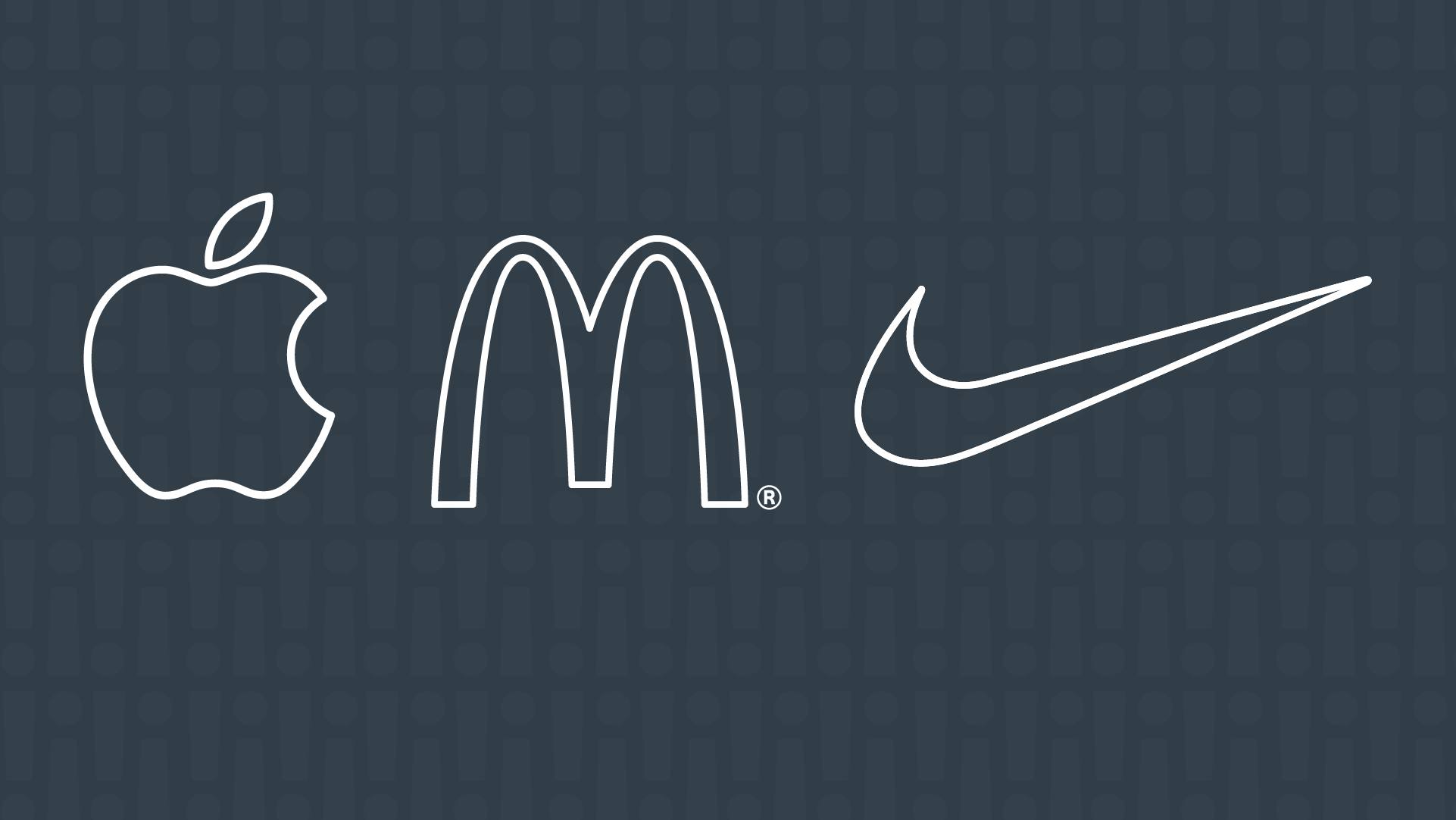What comes to mind when you hear the word “branding”? For many people, it’s a company’s logo. If that was your answer, too, give yourself partial credit. Logos are part of branding, but they aren’t the only component. Branding is made up of the many elements you use to communicate who you are to your audience and distinguish yourself from competitors. It includes your brand persona, logo, color palette, typeface (font), and brand tagline.
A strong brand identity is one that is instantly recognizable. In fact, it is so recognizable that you would know exactly what company is being advertised even if the brand name were removed. Case in point, Doritos launched an ad campaign that didn’t feature their brand name or logo — and it was really well received. It was called “Another Level” and features a plain chip bag with the familiar triangular-shaped snack on it. They even changed their Twitter handle to @Logo_Goes_Here and their web address to thelogogoeshere.com. Their point is that the chip is so iconic, they don’t need to name it. You already know.
You’d also know which products are made by Apple, simply by seeing an apple with a bite taken out of it. And when you hear the words “Just do it,” you know it’s a Nike ad, even if they never said it. Brand recognition doesn’t happen overnight. It takes a considerable amount of research, strategy, planning, consistency, and market saturation.
If you’re just starting out on that journey — or looking to elevate your current branding — read on to determine what you need to do to develop a strong brand identity.
Step One: Determine your brand persona.
Every brand should have its own distinct personality. These are the characteristics that make your brand who it is and becomes how people know you. Imagine your brand is a person. What personality traits, attitudes and values would you use to describe it? Schedule a brainstorming meeting with key decision makers to finalize these descriptions and share them with teams who will need to embody this persona, such as your marketing and sales teams. Your brand persona will become like a familiar friend to your target audience, allowing them to build a connection with you that leads to brand loyalty.
Step Two: Develop a visual identity.
If your brand is a person, your visual identity is the hair, the clothes, the walk, and the talk, according to Ben Matthews, senior director of design at Adobe Spark, which creates visual stories. For example, let’s say your brand is a woman in a tailored business suit or a man with tattooed sleeves. From those descriptions alone, you might have perceived the woman as conservative and hardworking and the man as rebellious or edgy. Your audience will have this same instantaneous response to your visual identity. To get a sense of what you want the physical characteristics of your brand to look like, create a mood board. This can be a collection of imagery, icons, typefaces, and even other brand logos you like that your graphic design team can use as inspiration.
Step Three: Develop Your Brand Identity
Your brand identity is made up of a variety of elements, including your color palette, logo and typefaces.
Color Palette: Research shows that people make up their minds within 90 seconds of their initial interactions with products. Up to 90 percent of that product assessment is based on colors alone so it’s important to get it right. Coca-Cola’s iconic red logo wasn’t by happenstance. During the mid-1990s, alcohol was taxed, but soft drinks were not. As such, the company painted the barrels red so tax agents could distinguish them from alcohol during transport. Red is also a trigger for impulse buys, which makes it the stand-out choice in the fridges many grocery stores keep them in next to the check-out aisles.
Logo: A logo may consist of some or all of these three parts: The brand name, icon and tagline. Some brands also choose to create variations of their logo, used differently depending on the medium. As an example, a brand might drop the tagline for a print piece with limited room, but keep it on its website. Some brands even use the brand name without the icon or the icon without the brand name. Starbucks, for instance, sells cold to-go cups with the icon only, the infamous green twin-tailed mermaid with a crown. As such, it’s important to ensure that all of your logo elements look cohesive together, but could also stand alone, if need be. It’s important to note also that your logo can — and should — evolve over time, similar to iconic brands like Apple, McDonald’s and Disney.
Typeface: The font, point size and order of your text also impact your brand identity. There are five main font families, including serif (which have the “little feet” at the top and bottom of each letter), slab serifs (larger “feet” that often makes typography look vintage), sans serif (no “little feet” for a more clean and modern look), script (which resembles cursive), and handwritten fonts (which offer a more personalized touch). You’ll want your typeface to align with the personality of your brand. For instance, if your brand persona is bold and commanding, you might try a sans serif font in all caps. Above all else, you want your typeface to be legible — even when reduced in scale. This is important because it will need to translate well across different mediums, from print to digital to TV.
Step Four: Narrow down your logo to 3-4 variations and run a test group.
Selecting the right logo as a brand is one of the most important decisions you can make. As such, you want to make sure your branding will resonate with your target audience before you go to market with it. Logo testing is the best way to do that. During logo testing, three to four variations of your logo are presented to representatives from your target audience. They evaluate each logo and provide feedback on specific metrics, such as visual appeal or trustworthiness. Your team then receives the results and you can use the data to help inform the prevailing logo choice and any small tweaks you may need to make before finalizing it.
Need help creating a brand identity that positions you for long-term success? MTN, Inc., offers brand development and positioning, brand strategy, competitive analysis, and market research. Discover how we can help you stand out in your space: (321) 779-1010.


